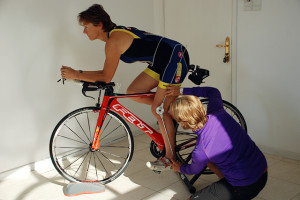Words By: Trace Rogers, Coach and Founder of SuperTRI
When it comes to cycling, triathlon or even recreational riding, there is no doubt that your biggest investment will be the bike. Therefore it is of utmost importance that you can get the most out of your ride.
Just like a runner could not expect to win a marathon by simply slipping into a gold medallists’ shoes, a cyclist could not expect a great performance without having the bike correctly set up for their needs. Luckily, we live in a town where this service is readily available from qualified bike fitters.
A bike fitter’s services come into use well before buying a bike. Given that you are about to make a sizeable investment, both financially and in time, it is important that your future bike is the right size for you. A qualified bike fitter would be able to measure you up and confirm what size bike would suit you best as well as tell you whether the bike that you desire can be set up to your needs.
All modern bikes have quite a few sites that can be adjusted to give you the best ride. Whether you are looking at becoming more powerful or aerodynamic or just simply in search of a comfortable ride – the bike can be adjusted to get you your desired results. So having the correct size bike is just the start. Correct adjustments will get you the best ride.
As a seasoned rider you may want to consider a bike fit if any of the following applies to you:
Stiff neck and shoulders or sore back after 40 minutes of riding;
Numbness in your feet;
Soreness in your lower region;
A change in riding focus, e.g. as a road cyclist, you have decided to give Triathlon a go and have had Aerobars fitted to your bike;
What to expect from a good bike fitter:
• Expect to be asked questions about your lifestyle and any factors that could affect your riding experience. Cycling does not happen in isolation to everything else in your life. Factors such as extended time behind a desk, spine misalignments and old injuries could all affect the way you ride your bike.
• A flexibility check;
• A shoe check. Many cyclists’ problems stem from the way that the cleats have been attached to their shoes.
• An invitation to come back if not comfortable. Like any other adjustment, adjustments to a bike take time to get used to. If, however over a certain period of time you are still not entirely comfortable with the changes, you should be able to go back to your bike fitter for further adjustments.
Here’s to finding your perfect fit for your best performance!


